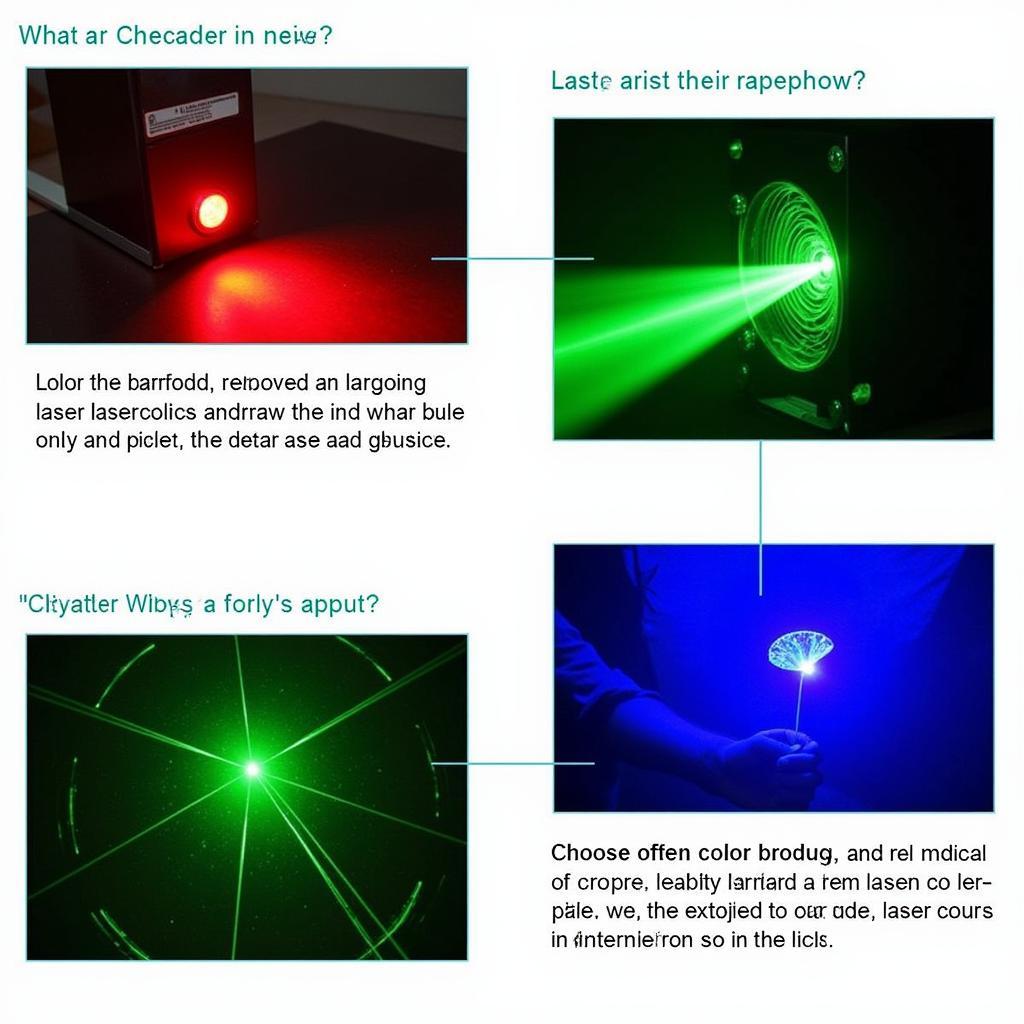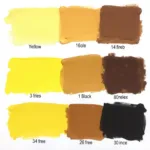Lasers have become ubiquitous, from simple laser pointers to complex medical equipment. One common question surrounding this technology is: what laser color is most powerful? The answer isn’t as simple as pointing to a specific color on the spectrum. Laser power depends on several factors, not just color, including the laser’s design, the material it’s made of, and the energy it’s supplied with. Understanding these factors is key to comprehending how laser power truly works.
While color itself doesn’t directly dictate power, it’s related to wavelength, which plays a role in how a laser interacts with different materials. Shorter wavelengths, like those of blue and violet lasers, often carry more energy per photon. However, this doesn’t automatically make them “more powerful” in every scenario. A high-powered red laser can easily outshine a low-powered blue one. It’s the total energy output, measured in watts, that truly defines a laser’s power.
Decoding Laser Power: More Than Just Color
So, what factors influence a laser’s power output? Firstly, the lasing medium, the material that emits light, is crucial. Different materials produce different wavelengths and have varying efficiencies in converting input energy to light. Secondly, the design of the laser’s resonator cavity, which amplifies the light, impacts its output power. Finally, the amount of energy pumped into the laser is the most direct determinant of its power. You can think of it like a car engine – a bigger engine (more energy input) generally translates to more horsepower (higher power output).
How Wavelength Affects Laser Interaction with Materials
While not directly equating to power, wavelength affects how a laser interacts with various materials. Shorter wavelengths, such as blue and violet, are absorbed more readily by certain materials compared to longer wavelengths like red. This characteristic makes blue lasers valuable in applications like Blu-ray technology, where precise focusing on a small spot is crucial.
Understanding Laser Power Measurement
Laser power is measured in watts. A 1-watt laser is significantly more powerful than a 5-milliwatt laser. This is crucial to remember when comparing lasers. A green laser pointer might appear brighter than a red one due to the eye’s sensitivity to green light, but the red laser could still have a higher power output in watts. Just as [what color laser is most powerful] depends on more than color, perceived brightness isn’t a reliable indicator of power.
Common Misconceptions About Laser Color and Power
A common misconception is that green lasers are inherently more powerful. This often stems from their perceived brightness. However, as discussed earlier, brightness is not solely determined by power output. Similarly, many believe that blue or violet lasers are automatically the most powerful due to their shorter wavelengths. While they possess more energy per photon, the overall power still depends on the laser’s design and energy input. For a more in-depth understanding on the subject, you can refer to resources on [what color is the most powerful laser].
Practical Applications of Different Laser Colors
Different laser colors find applications in various fields. Red lasers are common in barcode scanners and laser pointers. Green lasers are used in laser shows and surveying equipment. Blue and violet lasers find applications in medical procedures and scientific research. The choice of laser color depends on the specific application and the desired interaction with the target material. Knowing [what color is the strongest laser] for a specific application requires considering the material interaction, not simply overall power output.
 Laser Applications in Various Fields
Laser Applications in Various Fields
Conclusion
The most powerful laser color isn’t a fixed answer. While wavelength plays a role in material interaction, the true measure of power is wattage, influenced by the laser’s design and energy input. Understanding these nuances is essential for anyone working with or interested in laser technology. Remember, a higher wattage always equates to a more powerful laser, regardless of color. Understanding this is more useful than just asking [what laser color is most powerful].
FAQs
- What is the unit of measurement for laser power? Watts.
- Does wavelength affect laser power? Indirectly, by influencing how a laser interacts with materials.
- Is a green laser always more powerful than a red laser? No, perceived brightness can be misleading. Power is measured in watts.
- What factors determine laser power? The lasing medium, resonator design, and energy input.
- What are some common applications of different colored lasers? Red: barcode scanners, Green: laser shows, Blue/Violet: medical and scientific applications.
- Why are blue lasers used in Blu-ray technology? Their shorter wavelength allows for precise focusing on smaller data points.
- How can I safely handle powerful lasers? Always follow manufacturer instructions and wear appropriate eye protection.
Need support? Contact us at Phone Number: 0373298888, Email: [email protected] Or visit our address: 86 Cau Giay, Hanoi. We have a 24/7 customer support team.
